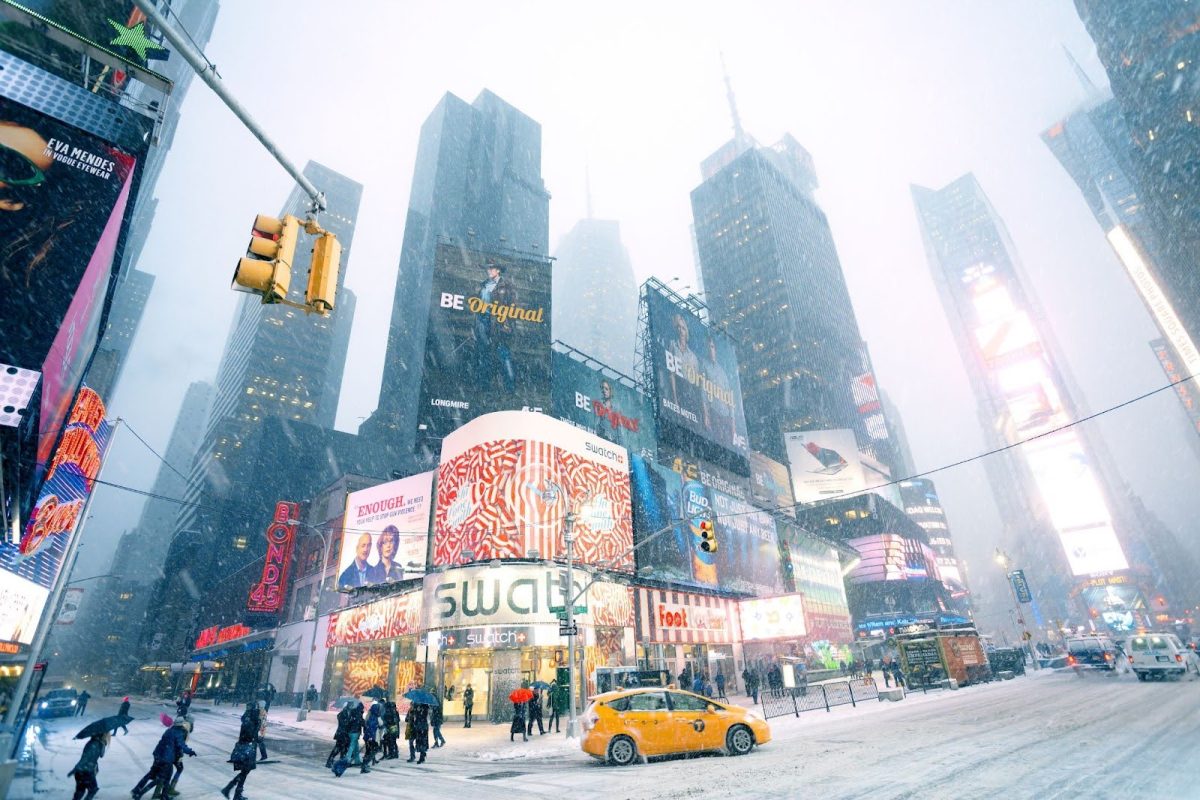This past winter was historic for almost everyone living in the United States; there was unprecedented snowfall in Southern California, over one hundred inches of snow dropped in Buffalo and surrounding areas, and those living as far south as Tampa, Florida, experienced temperatures in the forties on several occasions. Yet, there is something even more peculiar about this year’s winter, something that has not gone unnoticed by those living in the New York City Metropolitan Area, or NYCMA: a complete lack of snow. In normal years, New York City receives around twenty-six inches of snow; this past winter, New York received only 2.3 inches. The absence of snow in the metro area has led many to wonder about the reason for the phenomenon and whether or not snowless winters will become the norm moving forward.
Little snow in the NYCMA is not an unusual occurrence; New York received only 7.4 inches of snow in the winter of 2011–2012, 3.5 inches in the winter of 2001–2002, and 5.5 inches in the winter of 1997–1998. These winters, however, are the anomaly, as proven by New York’s usual abundance of snow; just two years ago, New York was hit with 38.6 inches. So if the NYCMA almost always receives some measurable amount of snow, then why was there none last winter? The answer boils down to two major explanations: climate change and a weather phenomenon known as La Niña, which is Spanish for “the girl.”
Climate change has made a significant impact on yearly global temperatures, yet the effects of climate change are not evenly distributed among the four seasons. For instance, global temperatures during the spring have increased by a little over 0.4° Fahrenheit in the last thirty years. Winters, meanwhile, have seen a temperature increase of 1° Fahrenheit. This disparity in temperature shifts has resulted in more conspicuous weather changes during the winter months, hence affecting winter more than any of the other three seasons. While one degree may not sound very grand, an increase of that scale is greatly consequential on weather patterns and conditions, thus vastly diminishing the amount of snowfall experienced in the NYCMA.
While climate change seems like the long-term answer to New York’s lack-of-snow question, it does not explain how the metropolitan area received 38.6 inches of snow in the winter of 2020–2021 and virtually no snow this past winter. This major variation in snowfall accumulation can be attributed to La Niña, a weather phenomenon that observes colder sea surface temperatures in the equatorial region of the Pacific Ocean, thus pushing the wind jet stream stretching across the United States more southward than normal. Essentially, La Niña brings about colder temperatures and drier conditions for the northern regions of the country, including the NYCMA, while simultaneously hitting the southern regions with warmer and wetter weather. While coastal, more southern areas in the Northeastern United States, such as New York, are greatly affected by this phenomenon, the impact is not as severe for more northern areas, such as Upstate New York, as these regions are already within proximity to the polar jet stream in normal years. Additionally, in many instances this past winter, the polar vortex, an atmospheric area of low pressure that resides directly above the jet stream and blocks off the cold air of Canada from the Northeastern United States, dipped, resulting in the bone-chilling temperatures experienced throughout the nation.
So, will snowless winters be the new norm for the NYCMA? The answer, at least for now, is no. Meteorologists are predicting New York City will receive anywhere from 18–26 inches of snow this winter season. This is due, in large part, to the end of the La Niña phenomenon and the emergence of an El Niño (Spanish for “the boy”) pattern in the Pacific Ocean, La Niña’s meteorological counterpart. However, given the aforementioned climate trends derived from climate change, drier New York winters might soon become the norm.
For more information about this year’s snow predictions, read this article by fellow staff writer Thomas Fecowycz.


